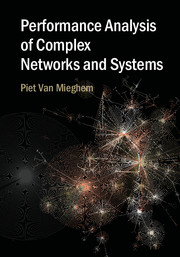Algorithms and Models for Network Data and Link Analysis
Network data are produced automatically by everyday interactions - social networks, power grids, and links between data sets are a few examples. Such data capture social and economic behavior in a form that can be analyzed using powerful computational tools. This book is a guide to both basic and advanced techniques and algorithms for extracting useful information from network data. The content is organized around 'tasks', grouping the algorithms needed to gather specific types of information and thus answer specific types of questions. Examples include similarity between nodes in a network, prestige or centrality of individual nodes, and dense regions or communities in a network. Algorithms are derived in detail and summarized in pseudo-code. The book is intended primarily for computer scientists, engineers, statisticians and physicists, but it is also accessible to network scientists based in the social sciences. MATLAB®/Octave code illustrating some of the algorithms will be available at: http://www.cambridge.org/9781107125773.
- Unifies algorithms from diverse fields, including applied mathematics, computer science and physics
- The task-based approach focuses on what information needs to be extracted, then on how to do it
- Derives algorithms in detail and summarizes in pseudo-code to support implementation and adaptation
Reviews & endorsements
'This is a remarkable book that contains a coherent and unified presentation of many recent network data analysis concepts and algorithms. Rich with details and references, this is a book from which faculty and students alike will learn a lot!' Vincent Blondel, Université Catholique de Louvain, Belgium
'An impressive compilation of motivation, derivations, and algorithms for a wealth of methods relevant to assessing distance and (dis)similarity, importance, labeling, and clustering of network nodes and links - tasks fundamental to network analysis in practice. The gathering of diverse elements from random walks, kernels, and other interrelated topics is particularly welcome.' Eric D. Kolaczyk, Boston University
'This is a reader-friendly up-to-date book covering all the major topics in static network data analysis. It both exposes the reader to the most advanced ideas in the field and provides the researcher with a toolbox of techniques to explore various structures: models involving the graph Laplacian, regularization methods, and Markov interpretations feature in this toolbox, among others.' Pavel Chebotarev, Institute of Control Sciences, Russian Academy of Sciences
Product details
December 2016Adobe eBook Reader
9781316713273
0 pages
0kg
14 b/w illus. 7 tables
This ISBN is for an eBook version which is distributed on our behalf by a third party.
Table of Contents
- 1. Preliminaries and notation
- 2. Similarity/proximity measures between nodes
- 3. Families of dissimilarity between nodes
- 4. Centrality measures on nodes and edges
- 5. Identifying prestigious nodes
- 6. Labeling nodes: within-network classification
- 7. Clustering nodes
- 8. Finding dense regions
- 9. Bipartite graph analysis
- 10. Graph embedding.



